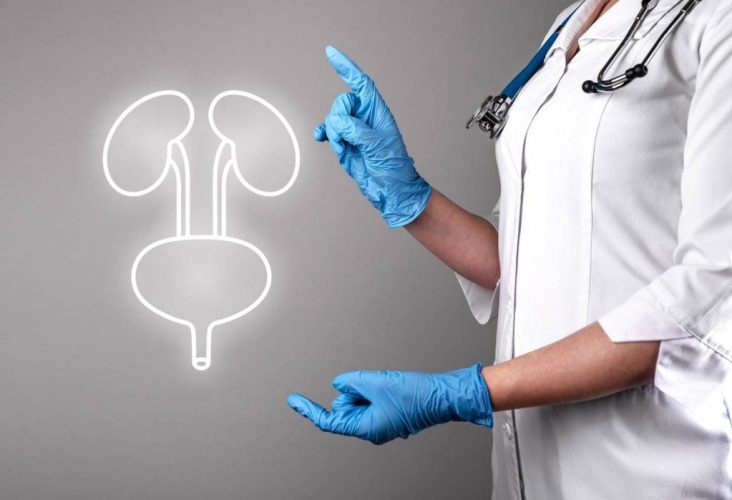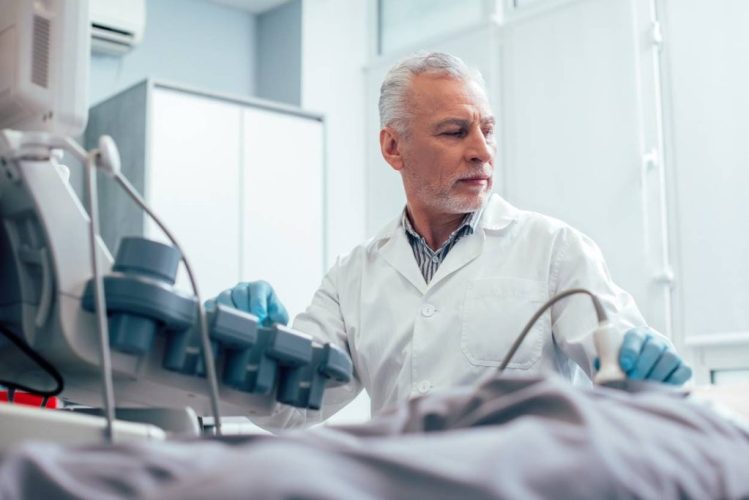Pain in the urethra is a common condition in men. It can be due to an inflammation of the urethra or to a urethral stenosis. Depending on their origin, they can manifest themselves by different symptoms more or less severe depending on the case. Treatments also vary according to the type of problem. How to recognize these diseases? What are the symptoms and possible treatments? Origins, manifestations, diagnosis… The Marois Clinics tell you all about it.
The different types of problems
Pain in the urethra in men can be a sign of urethritis or urethral stricture.
-
Urethritis
Urethritis is an inflammation of the urethra (the pathway that carries urine from the bladder to the urinary meatus) and the peri-urethral glands. In most cases, this inflammation has an infectious origin, which is why it is considered a sexually transmitted infection (STBI).
Urethritis is an important public health issue worldwide. They are frequent, highly contagious and increase the risk of infection by the human immunodeficiency virus (HIV). It is the cause of several cases of infertility in women and prostatitis in men. It is a reportable disease.
-
Stenosis
Urethral stenosis is a rare disease that affects about 0.5% of men. It is characterized by a narrowing of the urethra. This scarring around or inside the urethra causes a decrease in the pressure of the urine stream.
Causes of urethral pain in men
Depending on the nature of the problem, the causes of urethral pain can vary greatly.
-
Causes of urethritis in men
Urethritis can have both infectious and non-infectious causes.
In the majority of cases, it is of infectious origin and is the result of a sexually transmitted and blood-borne infection (STBI). It is caused by several bacteria, the three main ones being
- Neisseria Gonnorrhorea,
- Chlamydia Trachomatis,
- Trichomonas vaginalis.
Urethritis is called gonococcal when it is caused by the gonococcus (Neisseria gonorrhoeae). This is the most common form. It usually appears a few days after contamination, which probably occurred during unprotected sexual intercourse with a person who was already infected.
Gonorrhea can be associated with the second most common bacterium, Chlamydia (Chlamydia trachomatis). This mixed form is common and accounts for 25% of cases. Trichomoniasis, also transmitted through unprotected sex, is the infection caused by Trichomonas vaginalis.
Non-infectious urethritis is less common and can be caused by bladder instability or an enlarged prostate. They are also caused by testicular or prostate cancer, testicular abnormalities or inflammation after surgery.
-
Causes of urethral stenosis
Urethral strictures can have several causes. It may be related to a urinary tract infection such as gonorrhea. Other likely causes of urethral strictures include:
- infection of the foreskin (glans),
- tumors in the urethra (quite rare),
- severe trauma in the pelvic area (e.g., falling on a bicycle with a horizontal bar).
Technical manipulations (catheterization, endoscopies) as well as certain sexual practices with foreign bodies can cause trauma that favors scar formation. This can lead to narrowing of the urethra. Urethral stenosis can also occur following prostate surgery or other types of surgery on the urinary tract.


Symptoms of urethritis
Urethritis usually presents with several different symptoms. The patient may experience urinary burning, urethral discomfort and/or spontaneous urethral discharge outside of urination. This discharge may resemble pus or serum and may be accompanied by blood.
Urethritis may also be manifested by urinary frequency or hematuria (blood in the urine). Depending on the extent and origin of the infection, other clinical signs may also be present.
Symptoms of urethral stenosis
Urethral stricture results in the majority of cases in very thin or double, interrupted, spiral urinary jets. It can also be manifested by the following signs:
- dripping of urine after urination,
- burning sensation when urinating,
- presence of residual urine as a result of obstruction or urine flow,
- urinary tract infection,
- hematuria (blood in the urine)
In the most severe cases, stenosis can lead to complete obstruction of urine flow.


Possible tests to diagnose infections
In order to diagnose infections that cause male urethral pain, it is possible to perform different tests depending on the patient’s symptoms.
-
Possible tests for urethritis
If signs suggestive of urethritis appear, the physician will search for manifestations of STI. After confirmation, he or she will take certain biological samples to identify STI factors. He may ask for a urine sample or a sample of the urethral discharge that will be collected from the urinary meatus. These samples will be analyzed in a medical analysis laboratory.
The specialist may also perform physical examinations to diagnose urethritis.
-
Possible tests for stenosis
One effective test for diagnosing stenosis is cystoscopy. This involves viewing the inside of the bladder with a cystoscope. This test is performed by a urologist and provides a clear enough picture of the bladder to detect bladder infection, bladder bleeding or bladder problems.
Urethrocystography and bladder ultrasound are other tests that can be used to diagnose stenosis.
Treatment of urethral pain in men
The treatments proposed by the doctor are different depending on the problem that causes pain in the urethra in men.
-
Treatment for urethritis
The medications prescribed generally vary according to the germ responsible for the pathology. After confirming the diagnosis, the physician may prescribe an antibiotic-based treatment (free of charge at RAMQ). He or she may also prescribe painkillers and corticosteroids.
To optimize the effectiveness of the drug treatment, it is preferable to respect certain preventive measures such as
- abstinence for up to seven days after treatment is completed and symptoms have resolved,
- using a condom during sex if abstinence becomes difficult or if there is any doubt,
- mandatory testing and treatment by the partner(s).
Infections confirmed by a laboratory test must be reported to the regional Public Health Department (PHD).
-
Treatment for stenosis
To effectively treat stenosis, specialists can perform a dilatation of the urinary meatus. This surgery widens the opening of the meatus to facilitate the normal passage of urine. This is a minor surgery that is quite common in cases of stenosis.
Optilume is an innovative treatment performed in Les Cliniques Marois to treat recurrent stenosis, often after conventional treatments have been ineffective. This new treatment consists of balloon dilatation and medication administration.
Meatomy is a surgical procedure that also widens the opening of the urinary meatus. It is widely used to treat stenosis.
Urethral pain in men can be a manifestation of urethritis or stricture. Treatment for these infections can range from simple medication to surgery depending on the problem.
To find out the source of the infection, it is essential to confirm the diagnosis with a specialist. Cliniques Marois has specialists in the diagnosis and treatment of sexual diseases and urinary disorders. Consult one of our specialists for quality care.


